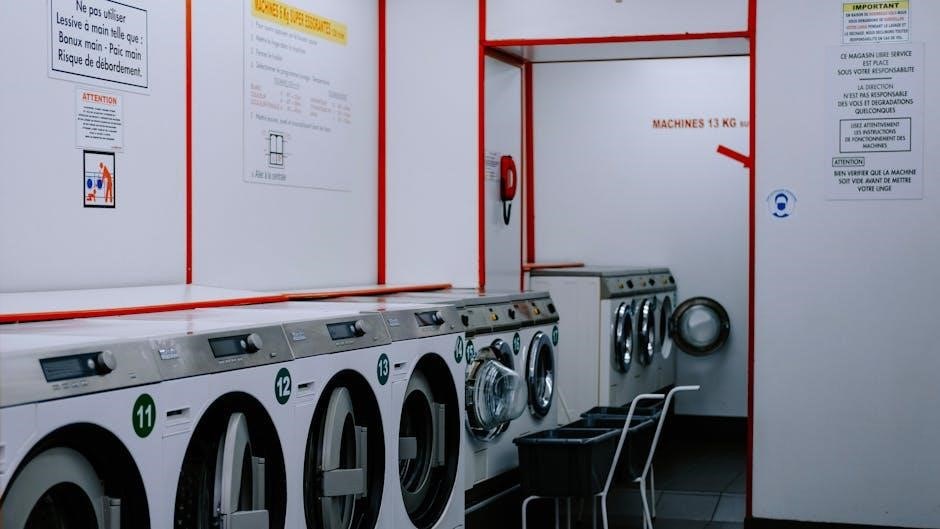1.1 What is LifeVac?
LifeVac is an FDA-cleared, non-invasive suction device designed to help clear airway obstructions in choking emergencies, providing a portable and easy-to-use solution for all ages.
LifeVac is an FDA-cleared, non-invasive suction device designed to help clear airway obstructions in choking emergencies. It is a portable and easy-to-use solution that works by creating a seal over the nose and mouth to suction out the obstructing object. Suitable for use on adults, children, and infants, LifeVac provides a reliable backup plan for choking incidents. The device is accompanied by instructional materials, including a training booklet and online videos, to ensure proper use. Its simplicity and effectiveness make it a valuable tool for both home and public settings.
1.2 Purpose and Benefits of LifeVac
LifeVac is designed to provide immediate assistance in choking emergencies by safely and effectively clearing airway obstructions. Its primary purpose is to act as a backup solution when traditional first aid methods, like the Heimlich maneuver, fail. A key benefit is its ease of use, requiring minimal training to operate correctly. LifeVac is portable, making it ideal for homes, schools, and public spaces. It offers reassurance for parents of young children and individuals prone to choking, providing a reliable tool to save lives in critical situations.
1.3 Key Features of the LifeVac Device
LifeVac features a non-invasive design with a cushioned mask for a secure seal, ensuring safe and effective suction. It is lightweight, portable, and easy to use, requiring no advanced training. The device includes multiple mask sizes for children, infants, and adults, making it versatile for all ages. LifeVac is FDA-cleared and can be used in emergencies where traditional methods fail. Its simplicity allows anyone, even the victim themselves, to operate it, providing a reliable solution for choking incidents.

When to Use LifeVac
Use LifeVac in choking emergencies when standard first aid methods like back blows or abdominal thrusts fail to clear the airway obstruction effectively.
2;1 Signs and Symptoms of Choking
Common signs of choking include difficulty speaking, coughing, or breathing, with the person often clutching their throat. They may turn blue or exhibit panic. If unconscious, they may require immediate intervention. Recognizing these symptoms quickly is crucial for effective use of LifeVac.
2.2 Determining the Necessity for Intervention
Assess the situation by checking for signs of choking, such as inability to speak, cough, or breathe. Use the ABCDE approach to identify life-threatening conditions. If the person is conscious and unable to clear the obstruction with coughing or manual techniques, intervention with LifeVac is necessary. However, if the person becomes unresponsive, begins to turn blue, or shows signs of cardiac arrest, immediately call 911 and start CPR. LifeVac should be used as a backup when primary methods fail, ensuring timely and appropriate intervention to prevent asphyxiation.
2.3 When to Avoid Using LifeVac
LifeVac should not be used as a replacement for standard first aid techniques like back blows or abdominal thrusts. Avoid using it if the person is able to cough, speak, or breathe normally, as this indicates the airway is not fully blocked. Do not use LifeVac on someone who is unconscious or has already begun to turn blue, as immediate CPR is required. Additionally, LifeVac is not intended for use on individuals who are breathing normally or for non-choking related airway issues. Always ensure the device is used only when necessary and according to its intended purpose.

Preparation and Training
Proper preparation and training are crucial for effective use of LifeVac. Understanding when to use the device, familiarizing oneself with its components, and practicing its application ensures confidence and competence in emergencies.
3.1 Importance of Proper Training
Proper training with LifeVac is crucial for effective and safe use. It ensures users understand how to apply the device correctly, creating a proper seal and using the suction feature effectively. Training also helps identify when intervention is necessary and how to remain calm during emergencies. By familiarizing oneself with the device, individuals can act confidently, reducing the risk of errors; Regular practice reinforces skills, ensuring readiness in critical situations. Proper training not only enhances the device’s effectiveness but also builds user confidence, making it a reliable tool for choking emergencies.
3.2 Step-by-Step Training Guide
A comprehensive training guide ensures users master LifeVac’s operation. Start by familiarizing yourself with the device components. Practice placing the mask correctly on a mannequin or willing participant, ensuring a proper seal. Learn to activate the suction mechanism smoothly and repeat the process if needed. Regular drills help build confidence and muscle memory. Training videos and instructional materials provide visual guidance. Always follow the manufacturer’s instructions and practice in a calm, controlled environment to ensure effectiveness in real emergencies.
3.3 Familiarization with the Device
Familiarizing yourself with LifeVac is crucial for effective use. Begin by handling the device to understand its components, such as the mask, suction mechanism, and size options. Practice assembling and disassembling the unit to ensure readiness. Check the mask sizes to determine the correct fit for adults, children, or infants. Regularly inspect the device for proper function and cleanliness. Understanding how to hold the LifeVac and position it correctly enhances preparedness for emergencies, ensuring swift and confident action when needed.

Step-by-Step LifeVac Instructions
Place the mask over the nose and mouth, create a tight seal, activate the suction to dislodge the object, and repeat if necessary for clearance.
4.1 Placing the Mask Correctly
To ensure proper placement, position the mask over the victim’s nose and mouth, making sure it is centered and forms a tight seal. Select the appropriate mask size from the provided options to fit the victim’s face snugly. Align the mask so it covers both nostrils and the mouth completely. A secure seal is essential for effective suction. Always refer to the instructional booklet or online videos for guidance on proper placement and sizing. Proper mask placement is critical for the LifeVac to function effectively in clearing the airway obstruction.
4.2 Ensuring a Proper Seal
A proper seal is crucial for the LifeVac to function effectively. Ensure the mask is tightly secured over the nose and mouth, with no air leaks. Check that the mask size matches the victim’s face to avoid gaps. Use both hands to gently press the mask, ensuring a firm connection. A secure seal allows maximum suction power to dislodge the obstruction. If the seal is compromised, the device may not work properly. Always verify the mask’s placement and fit before activating the suction to ensure optimal performance and safety.
4.3 Activating the Suction
Once the mask is properly sealed, firmly press the plunger downward with one hand to activate the suction. Use quick, steady force to create the necessary vacuum pressure. This action mimics a forced cough, helping to dislodge the object from the airway. If the obstruction remains after the first attempt, release the plunger and repeat the process as needed. Ensure the device is FDA-cleared and used correctly to maximize effectiveness. Always follow the manufacturer’s instructions and seek medical help immediately if the obstruction persists.
4.4 Repeating the Process if Necessary
If the obstruction remains after the first suction, release the plunger and reassess the situation. Repeat the process by resealing the mask and activating the suction again, up to three times if needed. Ensure the mask remains properly sealed to maintain effective suction. If the object is dislodged, provide first aid if necessary. Always follow the manufacturer’s guidelines and seek immediate medical attention if the choking persists after multiple attempts. Proper training is crucial for effective use in emergencies.

Using LifeVac in Emergency Situations
Stay calm, reassess the victim’s airway, and follow the ABCDE approach to prioritize their safety and well-being during a choking emergency with LifeVac.
5.1 Staying Calm and Reassuring the Victim
Remaining calm is crucial during a choking emergency. Reassure the victim by speaking softly and clearly, explaining each step to reduce panic. This helps the person stay composed and cooperative. Ensure the victim understands the LifeVac device’s purpose and how it will aid in clearing the airway. Maintaining a calm demeanor also allows you to focus on proper device placement and operation. Always prioritize the victim’s comfort and safety, and remind them that help is available and the situation is manageable with the LifeVac.
5.2 Following the ABCDE Approach
The ABCDE approach is a widely recognized method in first aid to identify and treat life-threatening conditions quickly. Airway management is critical, and LifeVac is designed to clear obstructions effectively. Ensure the victim’s airway is open and breathing is restored. Circulation should be monitored to prevent further complications. Disability assessment involves checking for consciousness and neurological responses. Exposure refers to preparing the victim for medical evaluation if necessary. LifeVac aligns with this approach, providing a structured and efficient way to address choking emergencies while maintaining focus on the victim’s overall condition.
5.3 Combining with Other First Aid Techniques
LifeVac can be used in conjunction with traditional first aid methods, such as the Heimlich maneuver or back blows, to enhance choking rescue efforts. If initial techniques fail, LifeVac provides an additional solution to clear the airway. It is essential to follow proper choking protocols and use LifeVac as a follow-up intervention if needed. The device’s portability and ease of use make it a valuable addition to first aid kits, ensuring quick and effective assistance in emergency situations while maintaining alignment with established first aid practices.

Special Considerations
This section covers using LifeVac on children, adults, and self-application, ensuring safe and effective use across all age groups and situations.
6.1 Using LifeVac on Children and Infants
LifeVac is suitable for use on children and infants, providing a safe and effective solution for choking emergencies. The device includes multiple mask sizes to ensure a proper fit. For infants, it’s crucial to use the smallest mask and follow the same suction procedure as for adults. Parents and caregivers should receive proper training to use LifeVac confidently on younger victims. It’s important to attempt back blows first before using the device. LifeVac’s portability makes it a vital tool for families with young children, offering reassurance in critical situations. Always consult a healthcare professional for infants under 1 year old.
6.2 Using LifeVac on Adults
LifeVac is effective for adults of all sizes, providing a reliable solution for choking emergencies. The adult-sized mask ensures a proper seal over the nose and mouth. After placing the mask correctly, activate the suction to create negative pressure and dislodge the obstruction. If the object is not dislodged, repeat the process as needed. The device’s simplicity allows anyone to use it, even with minimal training, making it a valuable tool for both home and public settings. Always follow the ABCDE approach to assess and address the situation effectively.
6.3 Using LifeVac on Yourself
LifeVac can be used on yourself in a choking emergency. Place the mask over your nose and mouth, ensuring a proper seal. Activate the suction to create negative pressure and dislodge the object. If unsuccessful, repeat the process. Stay calm and follow the ABCDE approach to assess and address the situation. If the obstruction persists, seek immediate medical help. The device’s simplicity allows for self-use with minimal training, providing reassurance and a potential lifesaving solution in critical moments.

Maintenance and Storage
Regularly clean the LifeVac with mild soap and water, ensuring no moisture remains. Store it in a dry, accessible place, and check for expiry or damage periodically.
7.1 Cleaning the Device
To maintain the LifeVac device’s effectiveness, clean it after each use. Use mild soap and lukewarm water to wipe down the unit and masks. Avoid harsh chemicals or abrasive materials, as they may damage the components. Ensure the mask is detached and thoroughly rinsed. Allow all parts to air dry before storing. Regular cleaning prevents contamination and ensures the device remains ready for emergencies. Always refer to the LifeVac Instructional Booklet for detailed cleaning instructions.
7.2 Storing the Device Properly
Store the LifeVac device in a cool, dry place, away from direct sunlight and moisture. Keep it in the provided storage case to protect it from dust and damage. Ensure all components, including masks, are clean and dry before storage. Regularly inspect the device for any signs of wear or damage. Always check the expiry date of the device and replace it as recommended. Proper storage ensures the LifeVac remains ready for use in emergencies. Store it in an easily accessible location for quick retrieval when needed.
7.4 Checking for Expiry or Damage
Regularly inspect the LifeVac device for any visible damage, such as cracks or detachment of parts. Check the expiry date printed on the device to ensure it is still usable. Before each use, verify that the mask forms an airtight seal and the suction mechanism functions properly. If any damage or wear is detected, replace the device immediately. Refer to the user manual for specific guidance on checking for expiry and damage to ensure the device remains effective in emergencies.

FAQs and Customer Support
Visit our FAQs page for answers to common questions. Contact customer support at 1-877-543-3822 or email support@lifevac.net for assistance. Check our website for additional resources.
8.1 Common Questions About LifeVac
Common questions about LifeVac often revolve around its effectiveness, ease of use, and comparison to traditional methods like the Heimlich maneuver. Users also inquire about its suitability for various age groups and how it differs from other choking relief devices. Many ask if it can be used on oneself and if prior training is required. Additionally, questions about maintenance, storage, and warranty are frequent. For more details, visit the FAQs page or contact customer support for assistance.
8.2 Contacting Customer Service
For assistance with LifeVac, customers can contact the dedicated support team via phone at 1-877-543-3822 during business hours or by emailing support@lifevac.net. The team is available to address questions, provide troubleshooting, and offer guidance on product usage. Whether you need help with device maintenance, have questions about training, or require information on warranty, the customer service team is ready to assist. Visit the official website for more details on how to reach them and receive support tailored to your needs.
8.3 Troubleshooting Common Issues
Common issues with LifeVac may include improper mask sealing or suction failure. Ensure the mask is correctly sized and centered on the victim’s face. Check for blockages in the device or tubing. If the suction fails, verify the mask is securely attached and the unit is properly assembled. For persistent issues, refer to the instructional booklet or contact customer support. Regular cleaning and maintenance can also prevent malfunctions, ensuring the device is ready for emergencies.
Additional Resources
Explore instructional videos, user testimonials, and expert endorsements to enhance your understanding and confidence in using LifeVac effectively in emergency situations.
9.1 LifeVac Instructional Videos
LifeVac instructional videos are essential resources for understanding proper device usage. Available on platforms like YouTube, these videos demonstrate step-by-step guidance, including mask placement, creating a proper seal, and activating suction. They also cover scenarios for adults, children, and infants, ensuring users are prepared for various emergencies. The videos emphasize the importance of staying calm and following the ABCDE approach. Additionally, they provide visual aids to complement written instructions, making learning intuitive and accessible for all users. These videos are a valuable tool for both initial training and refreshers.
9.2 User Testimonials and Reviews
LifeVac has received overwhelming positive feedback from users who credit it with saving lives during choking emergencies. Parents praise its effectiveness on children, while adults appreciate its ease of use. Many users highlight the reassurance it provides as a backup plan for choking incidents. Testimonials often mention the device’s simplicity and the confidence it instills. Reviews frequently emphasize its value as a must-have first aid tool. Users also appreciate the supportive customer service and clear instructional materials. Overall, LifeVac is widely regarded as a lifesaving, reliable, and essential emergency device.
9.3 Medical Professional Endorsements
Medical professionals and certified CPR instructors endorse LifeVac as a valuable tool in choking emergencies. Many recommend it as an alternative or supplement to traditional methods like the Heimlich maneuver. Its ease of use and effectiveness have garnered support from healthcare experts, who appreciate its non-invasive design. LifeVac is often praised for its ability to provide immediate relief in high-stress situations, making it a trusted addition to first aid kits and emergency response plans. Professionals highlight its suitability for all ages, including children and adults.
